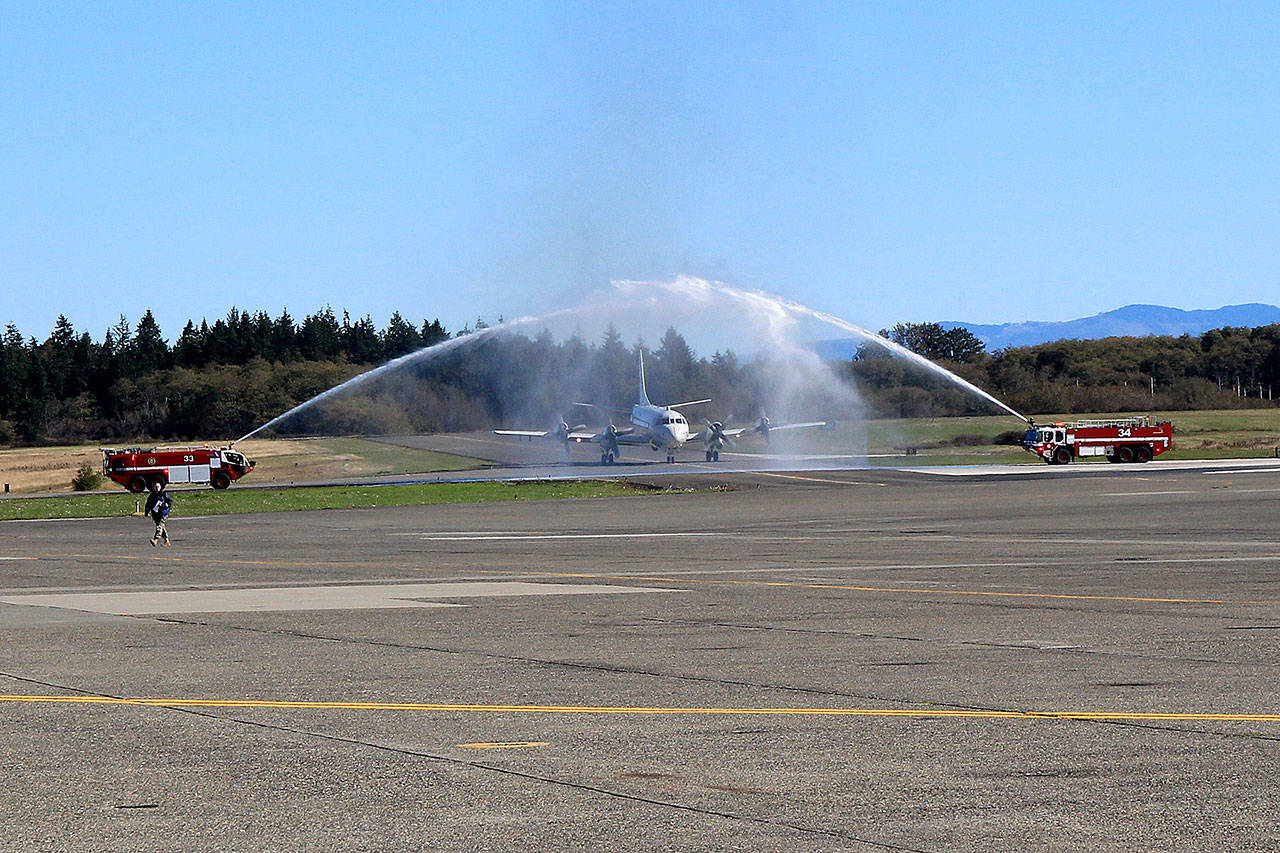An era of Naval aircraft history came to an end this month at Naval Air Station Whidbey Island.
“This is a big deal,” said Capt. Kevin Long, commodore of Patrol and Reconnaissance Wing 10.
He stood near the tarmac at Ault Field, where a crowd had gathered to welcome home the last active duty P-3C Orion from its final deployment.
The aircraft, which first came into use during the Cuban Missile Crisis, carried Patrol Squadron (VP) 40 from a split detachment overseas. As the prop plane taxied toward the crowd, it was ceremoniously doused by two Navy Northwest fire engines.
The Navy began using the P-3C in 1962, and it has continued to play a role in every major conflict since.
Cmdr. Joe Parsons, executive officer of VP-40 said the Orion’s durability and endurance are why it has stood the test of time. The four turbo propellers allow it to remain operational even if one of its engines malfunctions, and because the Orion isn’t able to refuel in the air, it’s designed to be able to fly for 10 or 12 hours at a time, he said.
However, it become clear that it’s time for a change. He said many of the parts used on the Orion are not available anymore, and it reached its capacity for modern upgrades.
In 2012, the Navy received its first P-8A Poseidon, the P-3C’s replacement. VP-40 is the last squadron to make the transition to the newer aircraft, which is built by Boeing.
Coincidentally, VP-40s return to Whidbey was delayed because its Orion had engine problems, according to Navy officials. Because there aren’t many spare parts left for the aircraft, a Poseidon had to fly the necessary equipment to the squadron so the P-3C could finish its journey.
“The reliability of the P-8 is magnificent,” Parsons said.
Its mechanical problems aside, Parsons said he felt grateful to be a part of the Orion’s legacy, which includes antisubmarine warfare, maritime intelligence, surveillance and reconnaissance.
The aircraft participated in the blockade of Cuba in 1962 and later was used to track Soviet ballistic missiles and submarines during the Cold War. For modern overseas conflicts, the Orion was adapted to perform counter-narcotic operations and overland surveillance.
The first Orion arrived at NAS Whidbey in July 1969. Patrol Squadron One was the first local squadron to make the transition from the P-2 Neptune to the P-3.
The aircraft was lauded at the time for its added floor space and having air conditioning, according to a 1969 Prop Wash article.
The Naval Reserves will continue to use the Orion; a variant used for intelligence, the EP-3E, is also still in service.
Parsons looked forward to the transition to the Poseidon, which he said will be able to upgrade more rapidly.
“As technology improves, it will keep pace more readily,” he said.
This month also marked the completion of Patrol Squadron Nine’s first deployment with the Poseidon, according to Long.
“Today’s a big day,” said Long. “October 10th will go down in history.”



